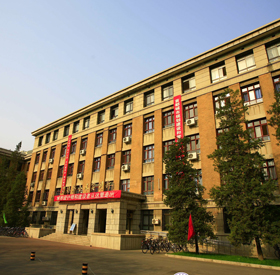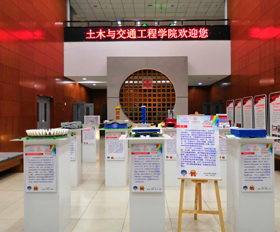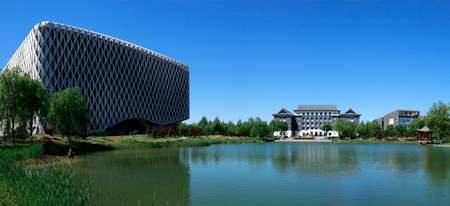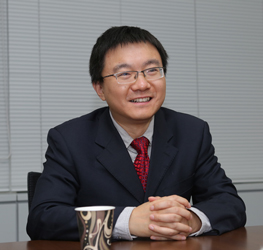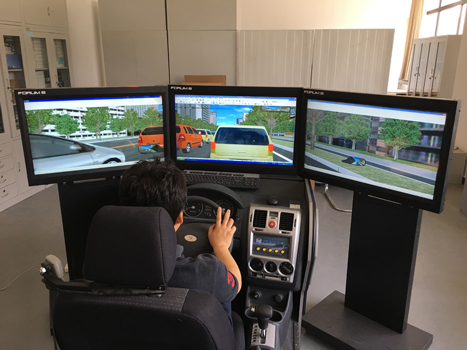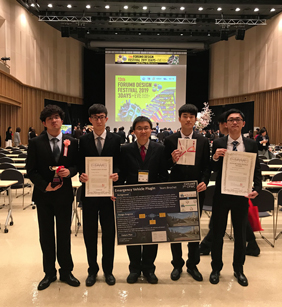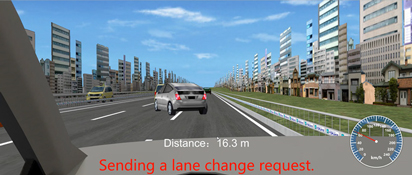|
||||||||||||||||
|
|
|||||||||||||||
|
||||||||||||||||
|
Currently, it forms a university of 13 schools with engineering as its main field, as follows: 1) Architecture and Urban Planning, 2) Civil and Transportation Engineering, 3) Environmental and Energy Engineering, 4) Electrical and Information Engineering, 5) Economics and Management Engineering, 6) Surveying and Urban Space Information, 7) Electromechanical and Vehicle Engineering, 8) Law, 9) Science, 10) Ideological and Political Theory, 11) Continuing Education, 12) International Education, and 13) Innovation and Entrepreneurship Education. With the main campus situated in the center of the city (Xicheng District, Beijing) since the University's foundation and its new campus in the suburb (Daxing District, Beijing) as the base, the Univ. has about 1,000 faculty members and more than 12,000 students (of both undergraduate and graduate schools) on the register. As such, the Univ. positions laboratories as the platform for raising human resources as well as collaborative research and development with the government. Department of Transportation Engineering, School of Civil & Transportation Engineering, to which Professor Jiao whom we interviewed this time belongs has 10 faculty members and more than 200 students in total of undergraduate school, master's and doctor's courses on the register. For example, the Department of Transportation Engineering operates 4 laboratories directly belonging to the Dept. in addition to "Beijing Advanced Innovation Center for Future Urban Design" which is a laboratory attached to the Univ. and was selected by Beijing City as one of the top 13 schools in the city for concentrated investment in expectation of collaborative research with the city. The former laboratories have the following themes respectively, along which they perform educational and research activities: 1) Measurement and collection of traffic information, 2) transportation planning and simulation, 3) traffic controls, 4) traffic behavior and safety. Diverse Activities through Actual Projects Centering on ITS and Simulation The main research fields of Professor Jiao include transportation planning, transportation design simulation, ITS, and traffic safety. In the projects he is involved with in terms of them, he is working on theoretical studies as well as building up system algorithms. Above all, the greatest weight is placed on ITS. As an example, he mentions the "Prediction and forecast system for road traffic flow" project that he took part in 2011. He and others collaborated with Tsinghua University from 2009 to 2012, participating projects for the system and "Optimization simulation system of the scientific transportation mechanism". The former has a function similar to VICS (Vehicle Information and Communication System) in Japan. The systems completed through these projects are currently operated and managed by Beijing Traffic Management Bureau. In addition, Beijing city moved its city hall from the center of the city to sub civic center of administration in Tongzhou District located in the east part of the city in Jan. 2019, as part of the policy to decentralize the non-capital functions. Professor Jiao and others collaborated with Tsinghua Univ. again in linking with this magnificent plan. They are participating in a project aiming at building up a smart transportation system around Tongzhou District. Currently, adjusting work towards completion of the system is in progress. "For projects related to traffic safety, it is hard to explain in words, but simulation makes it easy to imagine." For example, in China, projects of infrastructure development are progressed positively still today all over the country. In particular, when there are no existing standards for a plan to construct an expressway in a dangerous mountain area and such, the construction consultant makes an inquiry to university or research institutes through the government. At times, he and others perform simulation about the design in terms of safety, and provide support on evaluation and judgment. Moreover, pace of infrastructure improvement is increased towards Beijing Winter Olympics 2022. One of the notable related projects is Beijing-Zhangjiakou Intercity Railway, which connects Beijing city and Zhangjiakou, Hebei. Since there is also plans to connect this to plural railways as well as the tram car, subway, and buses, he and others made simulation of pedestrians (crowd) about the flow of users centering on the station. Apart from this, they also performed simulation of traffic environment using UC-win/Road. For example, they are trying to solve problems in the construction process by repeatedly making verification about signs and transfer guidance for users within the station premise. Regarding transportation planning, they support research projects for road network planning such as bus routes by district in Beijing city. They work on the area planning of the sub civic center of administration (Tongzhou District) mentioned above as one of those activities.
Novel Lesson Developed after UC-win/Road, Also Applied to Real Project Contact between Beijing University of Civil Engineering and Architecture and UC-win/Road dates back to 2007 when ITS World Congress was held in Beijing. The Univ. is situated within the walking distance from the congress venue. Our company staff visited the laboratory of the Univ. to perform demonstration, while holding exhibition. As the faculty member at the time considered that the software seemed useful in study, it was decided to introduce UC-win/Road in that year, followed by driving simulators (DS). After this, the Univ. examined establishment of two classes : "Virtual reality (VR) of transportation" with UC-win/Road as teaching material, and "Traffic simulation" that use UC-win/Road as its core together with other software. These classes started in 2011. On the other hand, Professor Jiao experienced UC-win/Road for the first time after his transfer to the Univ. in 2009 as written above. Since he immediately realized its advantages, he utilized UC-win/Road and the driving simulators for a large number of projects he was involved with. At the same time, they also adopted devices of eye tracking to measure the driver's line of sight and those to measure biological information such as brain waves and pulse. They build up a system for grasping the driver's driving behavior by integrating them and expand it step by step. "We have often used UC-win/Road in classes and general research, but it was evaluation of the expressway in Shandong in 2016 that we utilized it for the first time in a real project." Until then, he had utilized UC-win/Road in the classes mentioned above, as well as in participating the contest for students hosted by FORUM8 or preparing personal research paper. Especially in this project, he simulated the design of the final stage before starting construction. Based on its result, he pointed out some points to improve and gave feedback to modify the design. Doing such things allowed them to prevent huge loss that would have been suffered if it had been constructed according to the original design. In addition, in the expressway project in Canton, he simulated the design plan about the installment section of sound-insulating walls. Based on this, he gave detailed advice about the result of examination from the viewpoint of traffic safety, leading to modification of design.
Towards Study of the Transportation Planning of the Next Generation Based on Traffic Environment Peculiar to China "Our goal is not to do research and develop the technology of automated driving itself, but to study how to coordinate road improvement and transportation planning as a transportation expert, aiming at commercialization of the technology." In china, there are originally a large volume of bicycles, pedestrians, and vehicles. In addition, it is said that spread of electric scooters is noticeable. With such traffic situation different from other nations as background, one of the future issues is a theoretical study on transportation planning, for example, about how to plan road improvement towards the future progress of automated driving technologies, according to Professor Jiao. At the same time, based on a hard look at the progress of automated driving technologies linked with spread of IoT and 5G, it is required to consider how to plan signal control and transportation guidance systems. Regarding UC-win/Road, he also highly evaluates functions of visualization, as well as prior simulation and verification in infrastructure improvement projects. He has also been continuously using DS for more than 10 years since its adoption while customizing it as needed. He is assuming further utilization of UC-win/Road in consideration of upgrading DS for the future development of research. However, in designing intersections for example, though UC-win/Road enables minute and accurate representation, he mentions necessity to customize its report function etc. after performing simulation. This is one of the reasons that he expects the development kit "UC-win/Road SDK" will become easier to use. As he took part in "Design Festival" this time, he realized the advantages of exchange between users. "I wish the users in China could also share experiences each other similarly." |
|||||||
| (Written by Takashi Ikeno) (Up&Coming '20 New Year issue) |
|||||||
|
||||
